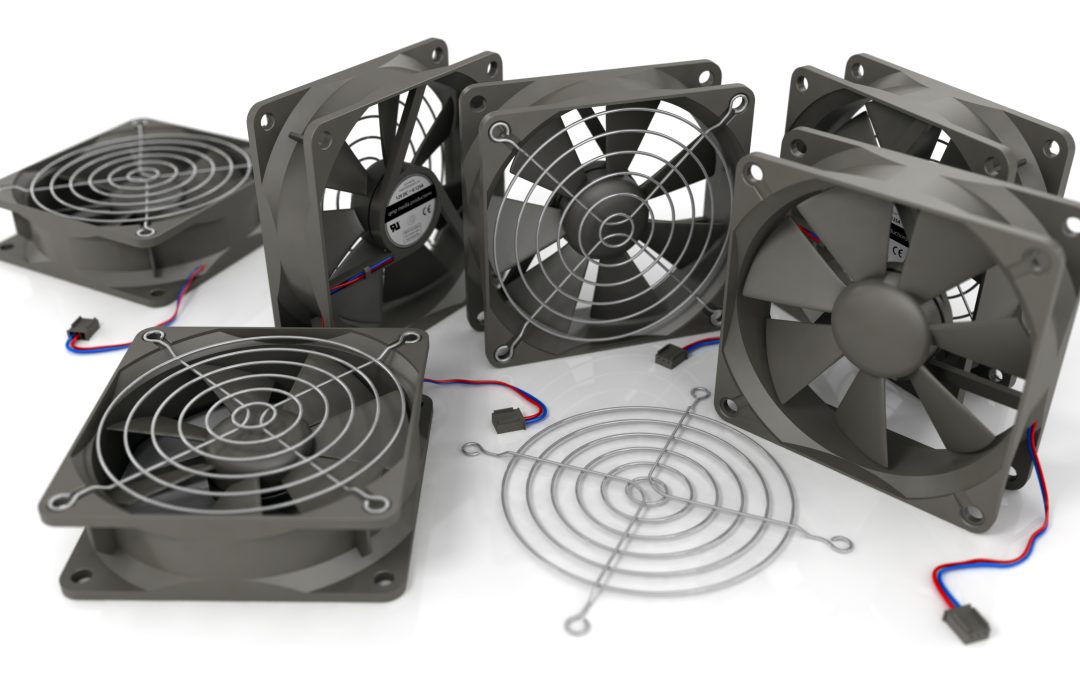4 types of air conditioning fans:
1. Centrifugal fans:
Central air conditioning and heating systems rely on centrifugal fans, sometimes called radial fans. They have a central hub and a series of blades that spin in a circular pattern. The air is drawn into the centre by these rotating blades, and then it is kicked outward at an angle to the intake. Centrifugal fans provide a consistent airflow using this mechanism, which allows them to efficiently move enormous quantities of air despite obstacles like filters or ducting.
These fans are useful in a wide range of HVAC applications, including commercial air handling systems and industrial ventilation. For complicated situations, their capacity to adapt to different system requirements and endure higher static pressures makes them important for ensuring regular air circulation.
2. Axial fans:
Centrifugal fans spin their blades in a circular motion, while axial fans spin the air in a parallel manner. The airflow is made straight and more efficient by this axial motion. If you need to move a lot of air with little resistance, an axial fan is an excellent option. Axial fans are commonly used in air-cooled chillers, condenser units, and cooling towers. When a constant, one-way flow of air is required to dissipate heat, their design works well. Because of their low energy consumption, axial fans are an environmentally friendly choice for many HVAC systems.
3. Mixed flow fans:
As its name implies, mixed flow fans have characteristics of both axial and centrifugal designs. Offering a compromise between high pressure and high airflow, these fans combine the benefits of radial and axial airflow patterns. For better efficiency and adaptability, mixed flow fans usually have their impellers angled.
Because of their adaptability, mixed flow fans find use in many HVAC systems. When regulating the volume and pressure of airflow is crucial, such as in cooling applications, ventilation systems, and air handling units, they are commonly used. When looking for a versatile solution, HVAC engineers often choose mixed flow fans due to their hybrid nature, which allows them to adapt to varied system requirements.
4. Crossflow fans:
The distinctive design of crossflow fans, sometimes called tangential fans, has an impeller that propels air in a direction perpendicular to the intake. Because of their small size and high efficiency, these fans are ideal for places where there is a lack of room.
Delivering a uniform airflow across a large region is one of the most noticeable features of crossflow fans. Because of this, they are perfect for uses like unit heaters, convectors, and small air handling systems where uniform air distribution is key. Crossflow fans are ideal for HVAC systems in small spaces due to their compact design and dependable performance.
Minimizing energy use and their effects on the environment:
These days, everyone is concerned about the environment, so it’s no surprise that HVAC systems—and especially their fans—are designed to be as energy efficient as possible. To lessen their products’ negative effects on the environment, manufacturers are always looking for new ways to improve fans’ performance. This is where variable speed drives (VSD) really shine; they let fans adapt their speed to meet demand as it happens. Not only does this maximize efficiency, but it also makes the fan parts last longer.
In recent years, there have been significant improvements in the design and materials used in centrifugal, axial, mixed flow, and crossflow fans. HVAC systems are in line with the worldwide trend towards greener technologies, thanks to the energy-efficient motors, aerodynamic blade profiles, and intelligent control systems that add to the overall efficacy of these fans.
Smart fan technology:
Smart technology has completely altered the HVAC industry, and fans are not an exclusion. Adaptive control algorithms, remote monitoring, and predictive maintenance are all parts of smart fan technology. Not only do these features improve system reliability, but they also help save a lot of energy.
Consider a situation where a building’s occupancy data is used to continually adjust the fan’s speed or where the fan proactively highlights the need for servicing before a breakdown happens. These are some of the potential benefits of smart fan technology, which might make the HVAC systems to adapt to the ever-changing needs of today’s homes and offices.
Noise reduction:
Even while controlling air circulation is the main purpose of HVAC fans, the noise they make is also important. Most people like to live or work in a peaceful and comfortable setting, therefore any kind of excessive noise is a big deal.
Businesses are putting money into noise reduction solutions so they can achieve a happy medium between maximum performance and minimum noise. Improved aerodynamics, new blade designs, and materials that absorb noise all work together to make fans run more quietly. Because of this, HVAC systems in noise-sensitive areas can be used for a wider variety of purposes, which improves occupant comfort.
Choosing the right air conditioner fan:
Choosing the correct fan is a crucial step in the complex world of HVAC systems. Different types of fans, such as centrifugal, axial, mixed flow, and crossflow fans, have different advantages. System needs, available space, and the ideal volume/pressure ratio of airflow will all play a role in making the final decision.
In order to make educated decisions and guarantee that the fans, which are the beating heart of HVAC systems, perform with accuracy and efficiency, it is crucial for engineers and designers to have a good grasp of the unique characteristics of these fans. In the ever-increasing field of HVAC systems, the development of new fan designs is expected to have a significant impact on the future of the industry, boosting innovation and sustainability towards the goal of achieving the best possible indoor comfort.


